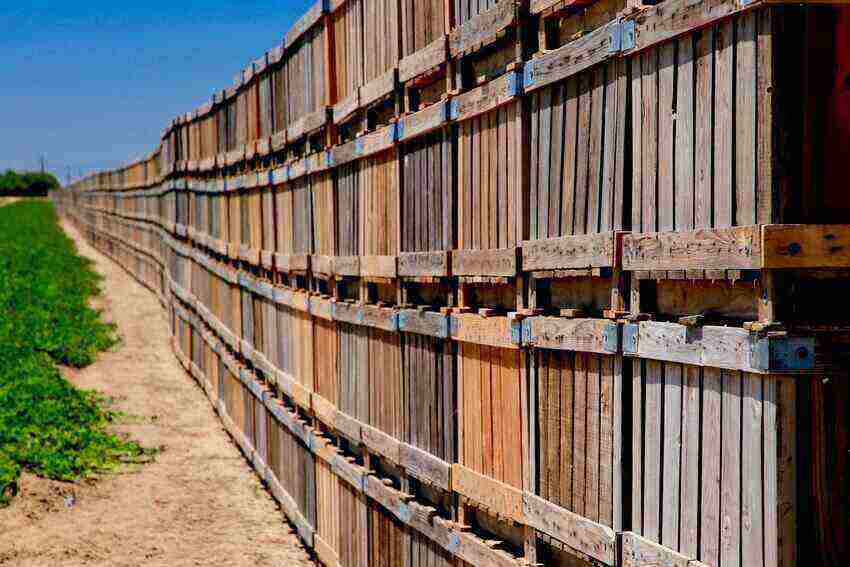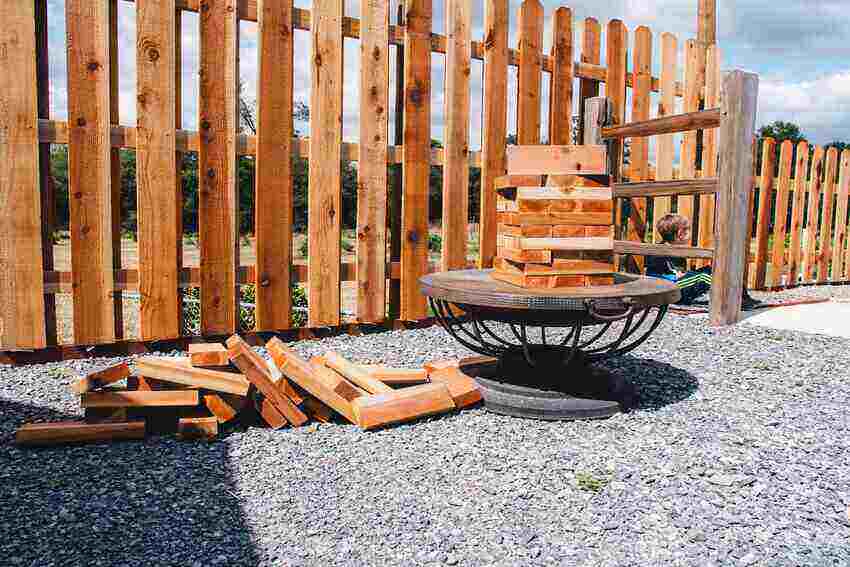Wood fences are aesthetically pleasing to the garden and home boundary. Not only that but also fences help to set parameters for the land and protect your domestic and agricultural property. So, you should choose fences and care them well for a longer lifespan.
But, wood fences haven’t an endless lifecycle. They will get damaged over time due to damp soil, rot, and harsh weather, it’s natural. However, don’t fret, using the right barrier e.g. metal types between fence and soil, you can reduce the rate of damage.
In this blog, we’re going to discuss some of the best kinds of garden barriers that you can use between fences and the ground to prevent fence damage by soil.
Why Soil Is A Potential Threat to Wood Fences?
Rot is an inevitable threat to the timber fence. One of the main reasons behind this is prolonged exposure of wood to moisture, especially when gets contact with soil. Rot weakens the structural rigidity of the wood fence hence reducing its lifespan.
Some people think you can get rid of the problem by replacing the rotten timber panels or posts, but this is not correct. Rot will attack the new fence panel and post again. So, you have to find any other practical way that prevents rot from the root.
When the bottom of the fence goes into direct contact with the damp soil the moisture starts to infiltrate and soak into the timber fence. Rain or snow is another factor that could lead to absorbing water by the wood fence which might also damage the fence.
How Can I Prevent Rot on My Garden Fence?
The best way to prevent the wood fence from being damaged by soil is to use a good barrier between the fence and soil so that fence won’t get in direct contact with damp soil. The clear separation between the ground and the fence will prevent damaging the wood fence.
But raising the soil level might cause rotting in the fence further. So, if you have a plan to create raised bed or compost area i.e. the slug compost, in the garden in the future, be sure that these won’t accelerate rotting.
What to Put As A Barrier Between Fence and Soil?

There are different ways to protect the fence from being damaged by soil. Out there, we’ve compiled here some of the most effective methods that you can do to minimize fence damage.
Barriers with Gravel Boards
When talking about sheltering the wooden fence to make separation with soil, using gravel boards will be one of the best options. To do it, install the gravel boards at the bottom. Then place the wooden posts or poles in the concrete. Alternatively, you can use concrete posts. This will separate wooden panels off the ground hence strengthening the fence.
Gravel boards can be either concrete or timber and raise the fence panels to keep away from damp soil. If you use timber gravel boards, they should be treated well for rot and moisture prevention. Usually, they need maintenance and you have to replace them when necessary.
On the other hand, concrete gravel boards needn’t extra care and they provide full protection of the fence from soil damage. They also last longer than wooden gravel boards. Wooden posts require to be put in concrete. Otherwise, timber will soak moisture, especially in the bottom part, and get weakened and damaged soon.
Rocks and Stones
If you don’t prefer gravel boards, you can use washed river rocks or decorative stones on the border of the fence to avoid direct contact between the ground and the wooden fence. The stone’s size should be between 1 to 3 inches.
Concrete Base
This is a conventional way to protect the wood from soil damage. You can make concrete flooring surrounding the garden base. It also makes a barrier between the fence and the ground thus preventing the rotting of the timber fence and also protects from pet animals like dogs.
Wood Pressure Treatment
Pressure treatment on wood is another effective method to prevent rot. A special type of preservative is penetrated deeply into the timber in the wood treatment method that works as rot prevention. This will keep the wood posts healthy for a long period.
Pressure treatment not only protects against rot but also fights against insects to keep them away. Moreover, if you combine gravel boards and concrete base with pressure-treated timber, you will get maximum protection and aesthetics that will provide really incredible protection to the wood. Harrow Fencing is a renowned company that supplies pressure-treated wood fences.
More Tips on Protecting Fence from Soil and Other Damage?
Besides the above-mentioned methods, the following tips will help you to protect the wood fence from soil, pest, and other damages.
Invest in a High-Quality Wooden Fence
It’s important to start off with high-quality wooden fences. Cedar, redwood, spruce, and pine are some of the best materials for wood fencing. They last longer and fight against rot and decay naturally. While choosing nails, fittings and hardware choose galvanized stainless steel for better weather protection.

Professional Installation
Some people use plastic, wood, or weed as a barrier between fences and soil. But they don’t provide good protection against rot. Thus, it’s recommended to hire professionals so you can install the wood fence with proper rot protection as well as make the method mistake-free.
Stain The Fence
Sealing or staining is another great way to extend wooden fence life. It also prevents rotting the timber and provides rain protection too. You can also mix stain or color with a water-repellant seal to protect the fence from being damaged.
Slope Footing
Sometimes slope footings might be a great way to reduce fence damage by soil. Slope the top side of the concrete away from the timber when putting the concrete base. This drains water fast near the wood surface thus the fence will last longer.
Clear Debris
Never allow pile-up leaves or debris near the fence. Also, mow the grass and cut trees from the fence (like pruning cedar trees) borders otherwise they might create small cracks hence rotting on the fence. Regular maintenance will help you greatly to clear foliage and debris from wood fences.
Inspect Regularly and Replace Rotting Sections
This is also important to inspect the wooden fence routine-wise. If you see any rotten parts, replace them soon otherwise rotten parts will affect healthy sections. This will save you money and effort. Replacing doesn’t mean full posts or timber replacement. Sometimes you cut the affected parts and join another good part to hold the fence.
Avoid Weigh Down The Fence
If you weigh down the fence, this might lower the fence gradually thus touching the soil. So there is no need to weigh down it. The post will keep the fence straight well.
Keep Some Materials Away from Fence
There are several materials that can really cause damage to the fence such as rinsing with a sprinkler or pressure washer or using baking soda or vinegar.
FAQs on Fence and Soil Barrier
How to protect the wood fence from winter damage?
One of the best ways to protect your timber fence from harsh weather including winter is to stain the wood fence. It will protect your fence from moisture seeping as well as rain thus preventing cracking and rotting. You can use a water-resistant stain for desired results. And reapply it after every 2 or 3 years.
How can I protect my cedar fence from the soil?
If you have a cedar fence, you can use pressure-treated wood or gravel boards between the soil and the fence to get perfect protection.
Final Thoughts
High-quality fencing provides the highest protection against soil damage and lasts around 5 years. If you want to get soil protection for the fence use barrier between fence and soil such as gravel boards, concrete posts, or a pressure-treated wooden fence.
The professionally installed fence also gives you good aesthetics as well as better durability and protection against damp soil. Hopefully, you can now protect your fence from being damaged by soil.

I’m Shofi, a passionate gardener and blogger. I have 10+ years of experience in gardening and hold certifications in horticulture and garden design. I share my knowledge and skills through my garden blog to inspire and educate others on the joys of gardening. I try to provide valuable information and create a community for gardeners of all levels to connect and learn. My ultimate goal is to inspire others to start their own gardens and connect with nature.
